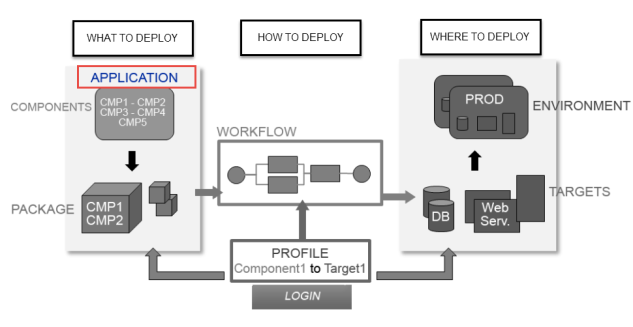
This topic provides an introduction to the Application entity. An Application entity is the main container of the deployment model and typically consists of multiple components. As an example, your application may consist of two components, a web application and a database component. Each application component utilizes a specific technology such as Apache Tomcat or a Microsoft SQL database. The application entity also includes component-related workflows to install, upgrade or remove application components.
An Application is the core entity of the ARA Deployment Model

An application bundles individual components with their related component workflows (to install, upgrade or remove application components) and dynamic property definitions. Application workflows, which are used to connect individual component workflows into overall deployment sequences, are also contained by an Application entity; so are application-level dynamic property definitions, which are shared between components (see Components).
The granularity and scope of an application is specific to an organization. Typically, an application is a piece of software (and possibly related configurations), which needs to be released and deployed as a whole.
Applications may be created from scratch or copied from existing ones being used as templates.
Access rights to applications are managed via folder security. See Required Folder Permissions.
In ARA you can give arbitrary names to applications and deployment packages - however we strongly suggest to introduce a consistent versioning schema across all your applications that allows to quickly identify successor/predecessor relationships.
Delivery packages reference the application they change or create, and optionally components within these applications.
If a delivery package points to an application but to none of its components, it means that the modified components are not known (yet). If a delivery package points to concrete components of an application, it means that ONLY the referenced components are created/modified by the package.
What you can find in this section:
You will find information on the scope, purpose and target group of this documentation, and on how to use it for best results.